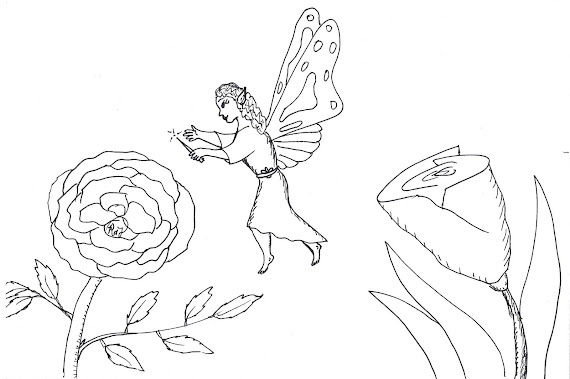This is my free coloring pages blog.
Today's newest drawing is of a Lilac Fairy.
More specifically it is a Flower Fairy named Lilac.
Flower Fairy named Lilac
There are many types of Flower Fairies. Each type of Flower Fairy has a preference for a certain type of flowering plant. THIS is Lilac, so of course, she loves lilac bushes and lilacs. Here we see Lilac, who has just transformed into mortal size, and she is emerging from the lilac bush. She is wearing a Balteum Volantes or flying belt. She, and most Fairies, wear a flying belt so they can fly faster and further than they can on wing power alone. A flying belt allows them to fly at high speed and for great distances.
Notice that Lilac has a butterfly necklace. This indicates that she is also a Butterfly Fairy.
Lilacs are considered magical by the Celtics. There are white lilacs and purple lilacs and they symbolized different things. White lilacs represent purity & innocence. Purple lilacs represent spirituality.
Lilac leaves are smooth-edged and are very heart-shaped. Some people think this means lilac bushes and lilac flowers represent love.
Lilacs are native to Europe but are now seen all over many Eastern states in the USA. They are also seen in some western states... including here in Utah, USA. However, Lilacs are one of my personal favorite smells... but I am allergic to their pollen.
NOTE: This new drawing up top is found by clicking on the button labeled "Fantasy, Myths, and Circus." Scroll down to the bottom of the drop-down menu and you will find the new drawing. Below are some other Flower Fairy drawings from previous posts so their printable versions will be further up the list. Some of the below drawings were done before I studied more on how to draw people (and Faries). So they are not comparable to my more recent drawings.
Flower Fairy named Marigold
Flower Fairy visits a Rose
Butterfly Fairy named Zinnia
(Butterfly Fairies are sometimes also Flower Fairies.)
Fairy among the Roses
(She is by a native Australian flower.)
(Grass is actually a flowering plant.)















No comments:
Post a Comment